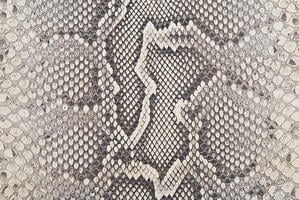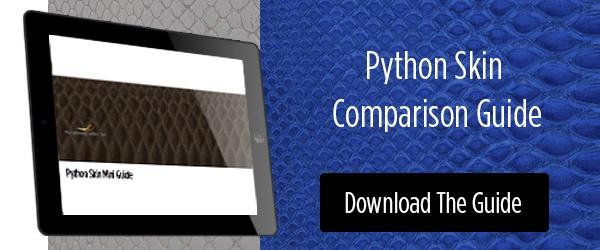 There are many challenges in making an exotic leather garment for high-fashion clientele.
There are many challenges in making an exotic leather garment for high-fashion clientele.
First, you usually want to minimize paneling, so you need a large skin.
Second, the leather needs to be soft and flexible so it’s comfortable to wear. Flexibility also helps to minimize the appearance of crease or stretch marks in the skin where it bends and folds around the body.
Finally, the look of the skin needs to be distinctive enough to make it stand out from garments made from common bovine products.
Python skin delivers on all of the above needs.
Skin Size and Grade
Larger python skins easily reach more than 3.5 meters long by 30 centimeters wide. This makes python skin more than large enough to fill most garment panels with ease. In fact, a single python hide may be able to provide you with several panels for your garment designs. In addition, the python skin shape is linear and fairly regular, so determining the best way to cut is straight forward to maximize your yields.
But, it takes more than a large skin to fill a garment panel; you also need a skin that is free from defects. Holes, pits, or scratches in the leather are difficult to work around or hide in a large panel, so it’s important to get a skin that doesn’t have these flaws in the first place. Because python skins come primarily from farms, finding large, defect-free grade I skins is usually easy.
Softness and Flexibility
In many other posts, we’ve discussed the softness and flexibility of python skin. However, for making flexible garments, it’s important to note the distinctions between the different species of python: short tail, diamond, and Burmese.
Overall, Burmese python hides make the best material for garments. Burmese python skins are thinner than short tail and diamond python skins. This thinness helps to make garment items lighter and more comfortable to wear. Additionally, Burmese python hides flex slightly more easily than the other commonly-traded python hides, so it’s a bit better overall.
With that said, any of the python species will work perfectly fine for garments. However, we do suggest avoiding glazed finishes as those tend to make skins stiffer. You typically want to stick to matte or nubuck for garment products.
Appearance
Python skins of all types have a very distinctive look that makes them immediately identifiable from plain cowhide. From the almost geometric, net-like patterns of the diamond python, to the rounded, random colored scales of the Burmese python, there are several options for making visually impactful garments from python skin. Even bleached, a python’s scales still create a visual texture to the garment that sets it apart from other leather types.
These are just a few of the reasons why python skins are perfect for your next garment project. Get started with your own exciting python skin garment project today!



